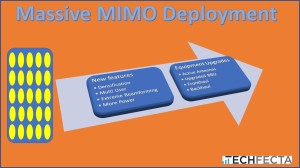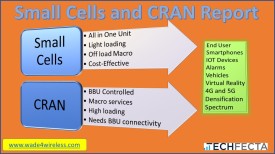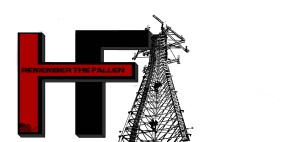Overview
Massive MIMO is the next wave of deployments that will lead to 5G at the macro site. It is deployed in LTE but is not tied to one technology. It is a form of transmission that makes the antenna transmit and receive more efficient for the carrier. While it’s a new technology, the core technology is beamforming. Massive MIMO is the ultimate active antenna using small radio heads in the antenna to transmit and receive with focused energy. It can be used in TDD or FDD. The massive MIMO is not technology dependent but is built to match that technology.
You can put massive MIMO anywhere, but it makes the most sense to put it at the macro site because of the cost. It is not cheap to deploy, but once it is in it add so much value. Why put it in? Because the densification increases exponentially. How does it do that? It has extreme beamforming techniques that allow the antenna to focus on 1 or 2 users. Why is that important? Because the power and data can be focused where it is needed the most. Now, imagine it can do that to over 1,000 users simultaneously. It would be a multi-user MIMO, MU-MIMO. This is going to exponentially improve coverage and the number of users on one sector at any macro site. That is why it will be a crucial differentiator in 5G. It will do amazing things for LTE so 5G will increase the value even more. That is what massive MIMO will do for the carriers, and that is why they want it for their systems.
remote site for a carrier, OEM, or large GC.
For a list of products to support Wade4Wireless, click here!
It’s important to understand that this is a big step towards 5G for the macro site. It’s something the carriers will do everywhere it makes economic sense. They will start in the urban areas then work to the rural areas. They may not put in massive MIMO at all macro sites because it’s an expensive upgrade. It is a lot of cost to put on a site where there are few customers.
What is Massive MIMO, really?
When companies refer to massive MIMO, they mainly are talking about the antenna. It’s more than that really. It is the way the antenna and the radio heads transmit and receive. It is a smarter antenna and a lot more radio heads. Imagine now that an antenna has 32 radiators in it. Now, imagine it has 32 transmit by 32 receive radios in one antenna. Imagine that they are all small and that they all can control their beamwidth in all directions.
Think about what I said above. It would be too much to have that many radio heads outside of the antenna. The radiating elements in the antenna need to be smaller since there are so many. However, if you could use smaller radiating elements and tiny radio heads and cram all of that in one antenna, it would become an active antenna. That is what most massive MIMO systems will be, an active antenna on the tower. A very smart antenna that could direct the signal to a specific area.
So the antenna is active, which means it has electronics in it. That means that the antenna will need power. So feeding the antenna will be a power cable and fiber jumpers. Coax is not needed to an active antenna, just fiber, and power. This means that the site work will no longer require coax. Now, you have fiber and copper to the antenna directly from the controller/BBU.
How does this change the site design? You’re still running fiber and copper up the tower like most LTE systems today. Instead of going to the radio head, you now go directly to the antenna, a much heavier antenna. Also, you probably need more copper, bigger copper, to power those antennas because of all the radios in one unit. One more thing, more data means more bandwidth needed which means more fibers will be needed. More power, more data, means better performance, in theory anyway.

The fiber needs to feed more than 1 to 4 radio heads. It has to feed more than 16 or even 256 in one antenna, small radio heads, but radio heads all the same. So you could have at least 3 fiber pairs, possibly up to 16 fiber pairs, to each massive MIMO antenna.
Back on the ground, the BBU must be upgraded or replaced so that it can control the active antenna. It also has to process more data than ever on the path to 5G. Think about the overhead to control the power, beam width, radiating elements in the antenna. That is a lot of overhead.
The entire system will need to be upgraded. This means a lot of work at the tower site. This is good for the tower worker. Lots of work through 2020.
What about the tower work?
If you’re reading this section, then you care about the tower work. Let’s go over some commonly asked questions.
What will the antennas look like? They will look like regular antennas only heavier, deeper. I saw some that are not as high or wide, which to me is amazing. They will need to be mounted on the tower without any radio head. So, the weight of the massive MIMO antenna could displace the same weight of the antenna, coax, and radio heads as on system. Basically, on the tower, the new equipment will replace the old equipment by removing the radio heads, coax, and old antennas.
Will you need to run hybrid cables? Probably. Remember, more bandwidth means more fiber. More power means more copper. More means new hybrid cables will be needed.
You know what this means? You need to remove the systems you put in about 5 to 10 years ago. The radio heads, coax, and antenna. You probably want to take down the assembly if you can. However, chances are the carrier will only upgrade one band, not multiple bands. This means that you may have to remove a partial system. Massive MIMO systems that I have seen only radiate on one band, as of 2018. The system planning will need to take this into consideration. This will change, but let’s take baby steps, shall we?
Is it a replacement?
If doing a swap, take this into consideration. New system up and on the tower. This means an outage and maintenance window work. The BBU may need to be replaced or upgraded. New power supplies will be needed. The old antenna, the radio head, hybrid cable, and coax will be removed.
This is a different system, but a simpler one on the tower. Hopefully, all the tower top plumbing diagrams will be the same to avoid any confusion.
The weight change may be minimal, but all the weight is the antenna. The antenna will be at the end of the mount, remember, all the weight will be on the mount. You can’t distribute the weight like you did with the radio heads. Now, all the weight will be at the antenna. All the weight is going to be at the end of the mast on the mast holding the antenna. FYI, the additional fiber and copper will also add weight to the tower.
In the old system, the weight was distributed across the mount, from the radio heads in the back to the antenna on the end of the mount. This distribution of weight across the radio head of the radio heads, coax, and the antenna was spread across mount from the end back into the tower. Today’s equipment will be smaller, but all the weight is in the antenna. The new equipment may weigh the same or a little more. Of course, this depends on the spectrum and design. More on that below.
If this is a swap, then consider the mount. With TIA-222 Rev H coming out, the mount now needs to be analyzed in most states. This means it may fail. Hell, it could have failed before you even did any work. Some carriers didn’t bother to do a mount analysis when adding the additional equipment. Now they are forced too. You may have to do it even if this is a rooftop. Just so you know, TIA-222 applies to the mount and you have mounted on the rooftop, so the mounts everywhere will need to have a mount analysis done. It’s not just the towers! Keep in mind that you may have to replace the mount. That is a lot of work. Plan accordingly.
If the mount is good, then chances are you will have to replace the antenna mast. The old mast was good enough to hold a 50lb to 100lb antenna, not the antenna may weigh 150lbs or more. All the weight will be on the antenna mast. No more weight distribution.
Is it a new Installation?
If this is a new install, then you may be putting in new mounts altogether. The new mounts should have been picked out in site acquisition. Site acquisition should identify the proper mounts in the site design. It will be a major installation, but nothing you can handle if you planned.
While a new install is a lot of money for the carrier, it will be very clean. New installations can be challenging, but no downtime, (YAY). It is a new clean install, in theory anyway. There are always challenges that the installation teams will run into. No tower work is without challenges. The tower teams must assess the situation, adapt, and overcome the problems while on site if possible. That is the nature of the business.
Who decides what mount is safe for massive MIMO antennas?
Site Acquisition should do this prior to any work being done at the site. Here is what should happen.
First, site acquisition will do 2 things. They will do a structural on the tower and the mounts. Both need to be done according to TIA-222 Rev H.
If the tower needs to be modified, the should catch it and put it in their report. This is going to be a considerable charge if the tower needs to be upgraded. Chances are it’s a different crew with the skill set of doing structural modifications and upgrades. Also, this adds costs and delays to the deployment.
If the mount needs to be upgraded or replaced, then site acquisition should find it and report it. The mount analysis report, which should include a mapping of the mount. It will explain what needs to be done.
Second, the structural engineer should make recommendations for modifications to the tower and/or mount. This is where the design should be done. They know what needs to be added to the tower or mount to make it safe. This is all going to be caught in the structural and mount analysis. The structural engineer will use that analysis and the information on the tower and mount so that the proper changes can be made.
What about the cables?
On the existing systems where the radio heads are on the tower, there cabling is similar, minus the coax. The coax will go away with an active antenna. The fiber and power will connect directly to the antenna.
However, most systems are going to have to replace the hybrid cable that is there. Why? Because the fiber is not sufficient to run most new systems. The amount of data passing through the new systems is going to be 10 to 100 times as much as it used to be. The fiber requirements will increase because the amount of data passing from the BBU up to the antenna has grown exponentially.
One more thing, chances are good that each antenna will need more power than before. They will each require power from the ground. They will require more DC power to make the MIMO massive. It takes power to have all this functionality and power all those radio heads in the antenna simultaneously.
So, there you have it, the hybrid cables will have more fiber and more power. This cable could be 3 to 10 times bigger and heavier than the original hybrid cable. This is added weight and complexity to installations.
For the tower, the hybrid cable still needs to be shielded and grounded. Fibers should be terminated, which means the climbers will run cable with connectors on them. This is a challenge because the connectors could get pulled off or damaged. It might be good to train your teams to terminate fiber. Also, the fiber connections need to be clean so installation will be done with care. Cleanliness matters for peak system performance!
Not only a tower but can you imagine trying to install one of these up a monopole center where there are already over a dozen cables. How do you deal with that? It’s going to be a challenge over the next 5 years. I would imagine the tower crew will need to have a fiber termination kit just in case connectors or pairs get destroyed.
Is it bigger or smaller? Size and weight matter!
The active antenna will be heavier than the older antenna, but from what I have seen it is not much taller or wider, but it is deeper. This varies from OEM to OEM and of course the band it operates in matters.
If T-Mobile deploys massive MIMO in their new 600MHz system, the antennas are going to be big and heavy. Not just because it’s massive MIMO, but because at 600MHz the antenna is larger than higher spectrum. Especially if it’s FDD because now you have a separate transmit and receive section. FDD adds complexity to the massive MIMO system.
Sprint, on the other hand, will have at 2.5GHz. The lower the frequency, the larger the radiating elements. They have TDD which transmits and receives on the same antenna, making the antennas smaller and more efficient. Sprint has the ideal spectrum and over 100MHz of bandwidth in most markets. Lucky Sprint!
I would think if the carriers can use massive MIMO in the 3.5GHz spectrum, they could truly enhance their coverage and throughput in amazing ways. It’s TDD and it allows for efficient use of the spectrum that could be a game changer in 5G.
Size and spectrum go hand in hand. The lower the spectrum, the larger the antenna.
Technology matters because FDD transmits and receives in different spectrum whereas TDD does it all on the same antenna. That means that FDD will need to have 2 sets of antennas making the massive MIMO antenna a bit larger.
Solutioning:
When doing this work or bidding on it, you should know who the customer is. Not the OEM or GC you’re working for, but the end customer, like T-Mobile or Sprint. The fact that they have spectrum at opposite ends of the spectrum will determine how you mount the equipment. It will also give you an indication of how they do things.
Make a checklist:
- Make sure you understand what spectrum you’re working in.
- Make sure you know the system design so that you have the right tools.
- It helps to know what mounts are at the tower, so you know the weight and installation plan.
- What is the fiber cable and connectors being used?
- How much copper is going to be used?
- What is the grounding requirement?
- What are the distance limitations for power and cable runs?
Summary:
By the time the tower crew gets to the tower to swap or install this equipment, there should be a MOP, Method of Procedure, already in place. We all know that this is a good guideline, but each installation has its nuances.
First off, know the scope of work, (SOW), before you go. Take the time to know what you’re installing, which OEM it belongs to, and how you intend to rig the equipment. Many of these antennas are heavy, and they may not have an easy way to attach a rope to the antenna. This is going to be a challenge, and each OEM has slightly different dimensions. Remember to check the BOM when reading the SOW.
Second, look over the SOW and the MOP, make sure you know what you’re up against. It helps if your team did the survey. Each site will be unique.
Third, know the tower. Do the site walk, look for problems. Look for anything that could be an issue. If you were trained properly, you will walk the site and look for hazards on the ground and in the air. It should be part of your training.
If you’re removing equipment, then take the time to look for issues that could slow you down. Make sure the mount is what they say it is. Just because it’s documented somewhere doesn’t mean the documentation is correct. You may need to replace the mount if it doesn’t match the paperwork. The mast may be undersized, or the radio heads might be hard to reach. Pay attention to detail.
Any way you look at this, it’s dangerous work. Safety is obviously the number one issue. You need to know what hazards are at the site. The best way to do that is the initial survey and toolbox talk. Experience helps. After a few installations, your awareness of what to look for will be there. You know how to rig in most cases. Experience helps.
Don’t forget about the cable. It’s big and bulky. It will be a challenge to run up the tower. Think about that when doing a site walk.
It pays to plan. It pays to be prepared. It pays to learn all you can about what you are going to do!
Resources:
- https://wade4wireless.com/2018/06/03/the-massive-mimo-deployment-report/
- https://wade4wireless.com/2017/11/27/what-is-massive-mimo/
- https://wade4wireless.com/2018/01/29/about-massive-mimo-beamforming/
- https://wade4wireless.com/2018/03/12/size-matters-with-massive-mimo/
- https://pdfs.semanticscholar.org/a33b/254b477253d6342bf9c54835ec763e1695af.pdf
- https://networks.nokia.com/solutions/massive-mimo
- https://wade4wireless.com/2018/06/23/the-small-cell-and-cran-deployment-report/
- https://wade4wireless.com/2018/05/28/the-mobility-backhaul-report/
- https://wade4wireless.com/2017/11/22/smart-city-use-cases-report/
- https://wade4wireless.com/2017/01/22/industry-reports-available/
- https://wade4wireless.com/2017/01/30/the-5g-deployment-plan-book-release/
- https://wade4wireless.com/2017/02/06/the-smart-city-5g-business-plan/
- https://wade4wireless.com/2017/09/18/learning-5g-in-the-real-world/
Brought to you by Wade at www.wade4wireless.com Smart Tech.
Also, www.techfecta.com when ready for services.
Thank you for your support and your time. And good job on learning all you can in the wireless industry, you are amazing! Now, go out and impress people!
Would you sign up for a membership site with private content? If so, email me at wade@techfecta.com and write Membership.
Do you want an occasional email with free PDFs of these reports along with book and training offers? Read posts like these offline!
Be smart, be safe, and pay attention!
See Ya!
More products from TechFecta and Wade4Wireless that support WADE!
The foundations below do beautiful work, spreading love when all seems lost.
Climbers can get seriously injured and/or die on the job. Support the workers who build and install the wireless systems!
Together we can honor and remember the fallen in our wireless family.
Hubble Foundation helps the families of climbers in a time of need and beyond with financial support and counseling!
Tower Family Foundation supports the families of tower climbers at the time of crisis when a climber falls with financial assistance and more.









 Putting together your smart city tech solutions, planning, development, and more…TechFecta! Guiding you to a better plan through consulting!
Putting together your smart city tech solutions, planning, development, and more…TechFecta! Guiding you to a better plan through consulting!

That’s good but not so good. To do this, the protocol CPRI (BBU-RRU) must cease to be proprietary. The article all right! Thank you!
LikeLike
Very nice.
Thank you..
LikeLike